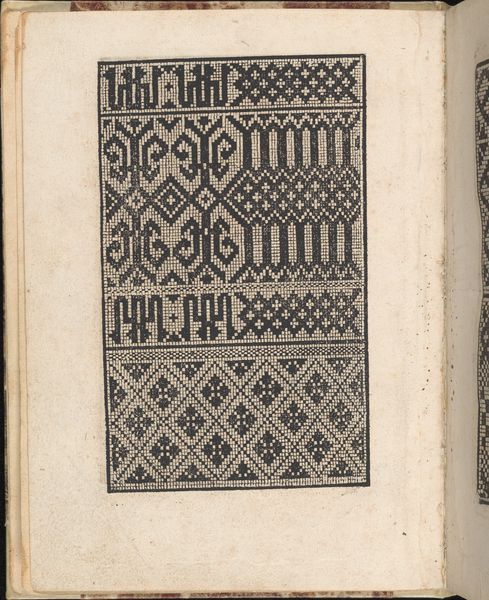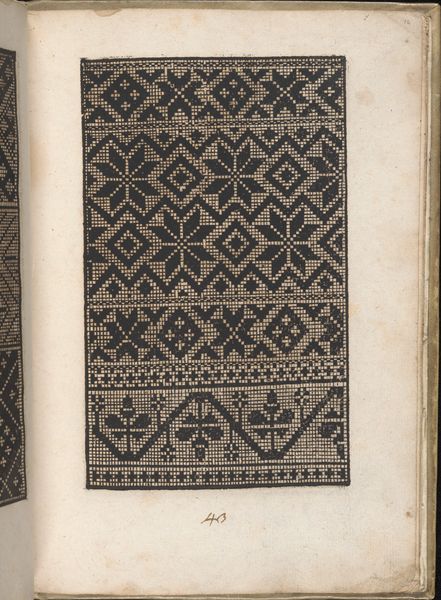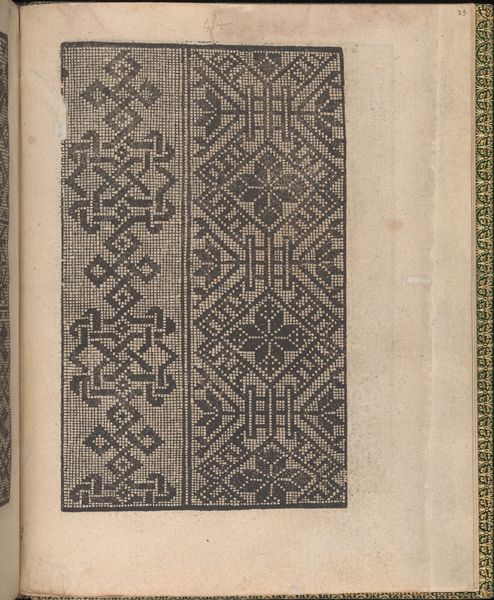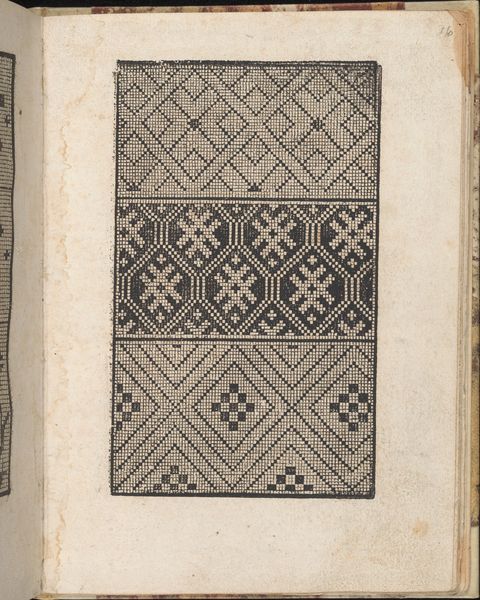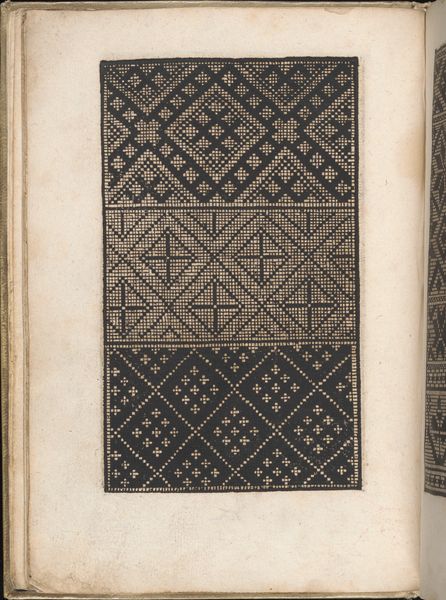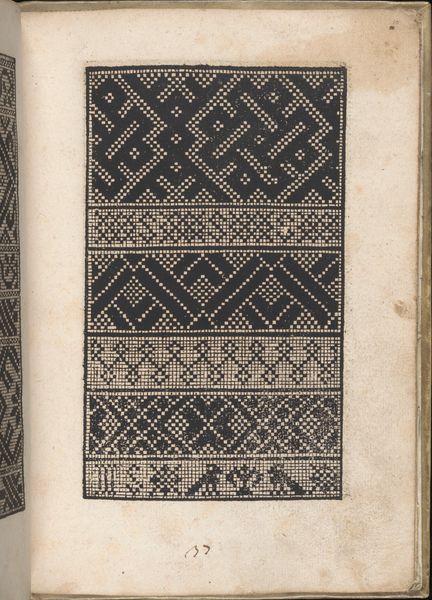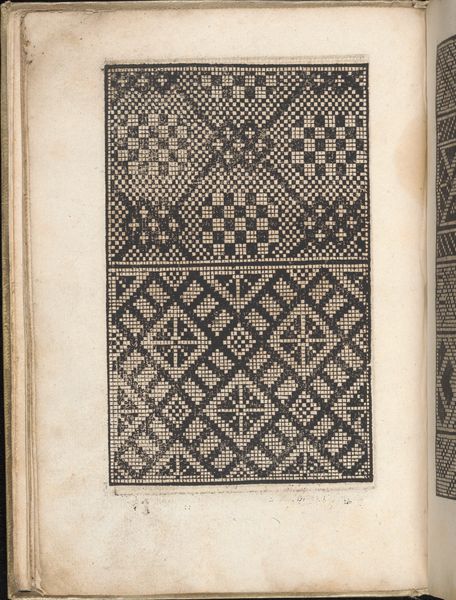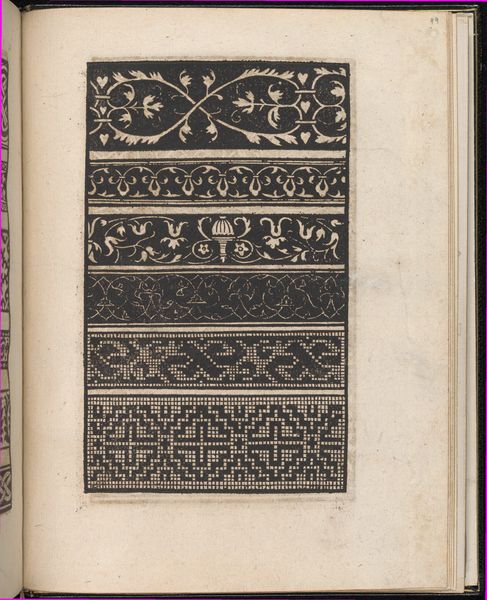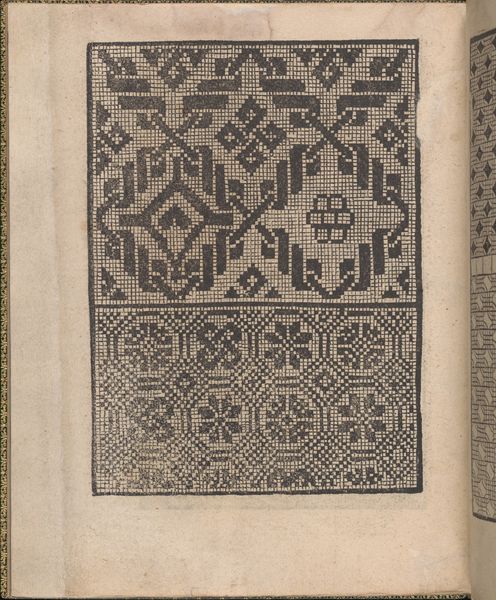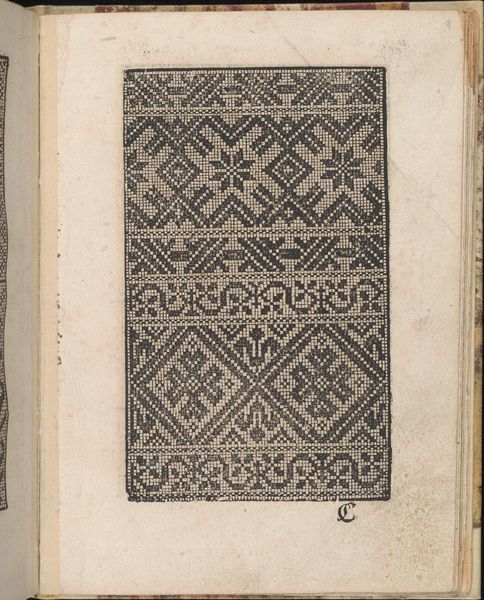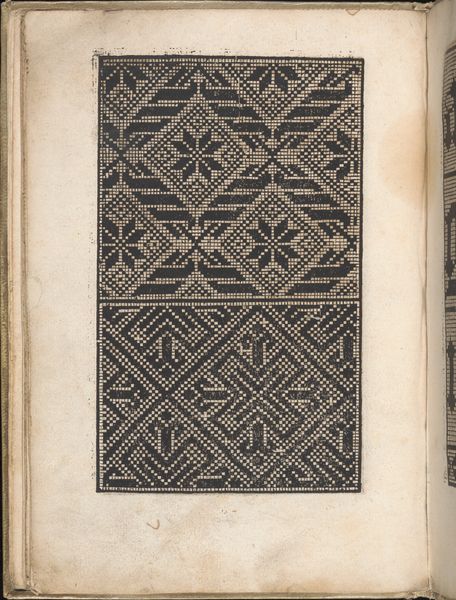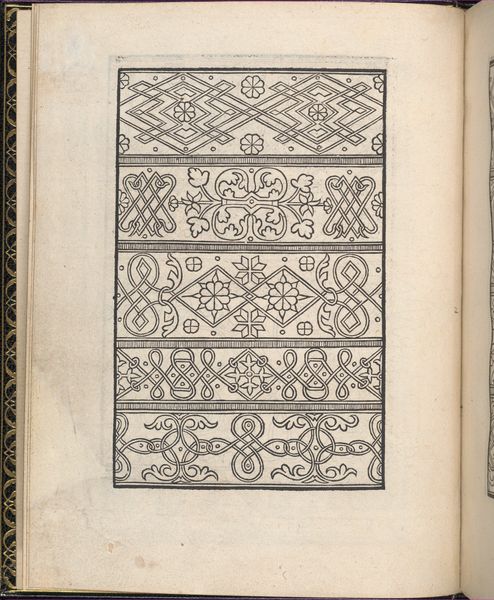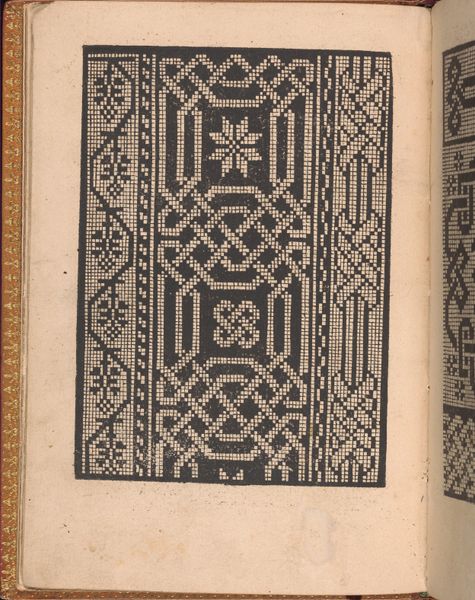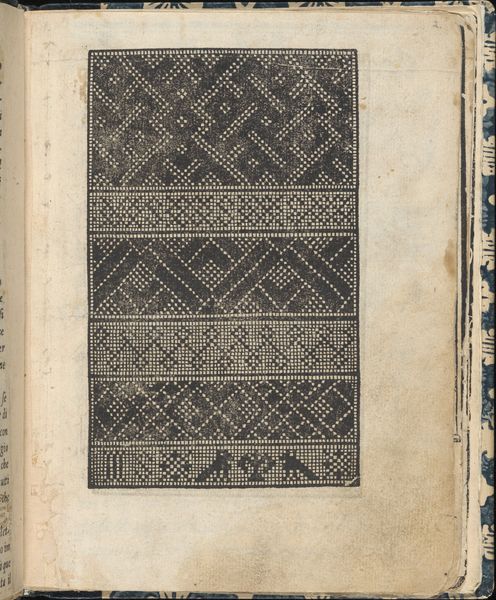
drawing, print, textile, paper, woodcut
#
drawing
# print
#
book
#
textile
#
paper
#
11_renaissance
#
geometric
#
woodcut
#
men
Dimensions: Overall: 7 7/8 x 5 1/2 in. (20 x 14 cm)
Copyright: Public Domain
Curator: Look at the incredibly detailed geometric patterns on this page from "Eyn new kunstlich boich," dating back to 1529. It's currently held at the Metropolitan Museum of Art. Editor: Wow, it's strikingly graphic for something so old. The stark black and white contrast really pops, and it almost looks like some kind of early computer-generated design, but obviously created by hand with simple, available materials. Curator: Precisely! It's a woodcut print on paper, part of a book created by Peter Quentel. What we are seeing is more than art; this pattern book served as a resource for textile workers. It democratizes design by offering it in reproducible form, connecting "high art" to craft practices. Editor: That makes perfect sense. It's about the accessibility of art, how printed imagery could spread aesthetic ideas beyond the elite. It also speaks to how artisanal skills like embroidery and needlework were valued at the time. Were these pattern books widely used by various social classes? Curator: They were certainly impactful. Such books provided patternmakers a direct way of realizing designs which could become consumer products on multiple social levels. In regards to dissemination, imagine these patterns not just confined to the book, but being transported and translated across borders via trade, personal travel, influencing artisans and makers. Editor: You can really see how something like this helped shape visual culture, then, almost serving as a mood board for the entire era. A blueprint for fashion and home decor influencing everything. Curator: Absolutely, by understanding the materials and mode of production we recognize that Peter Quentel not only helped determine artistic trends, he contributed to broader visual literacy of Renaissance society, enabling even distant communities with tools for engaging in a shared visual language. Editor: I think what's most compelling is how this functional object has become an artifact valued within an art historical context. It asks us to reconsider where we place value. Curator: Indeed. Examining its socio-historical footprint helps highlight a powerful interrelationship between craft, labor and artistry in the Renaissance era. Thank you for unpacking all that meaning with me. Editor: The pleasure was all mine; I came for a print and discovered a lesson in societal distribution of taste!
Comments
No comments
Be the first to comment and join the conversation on the ultimate creative platform.
